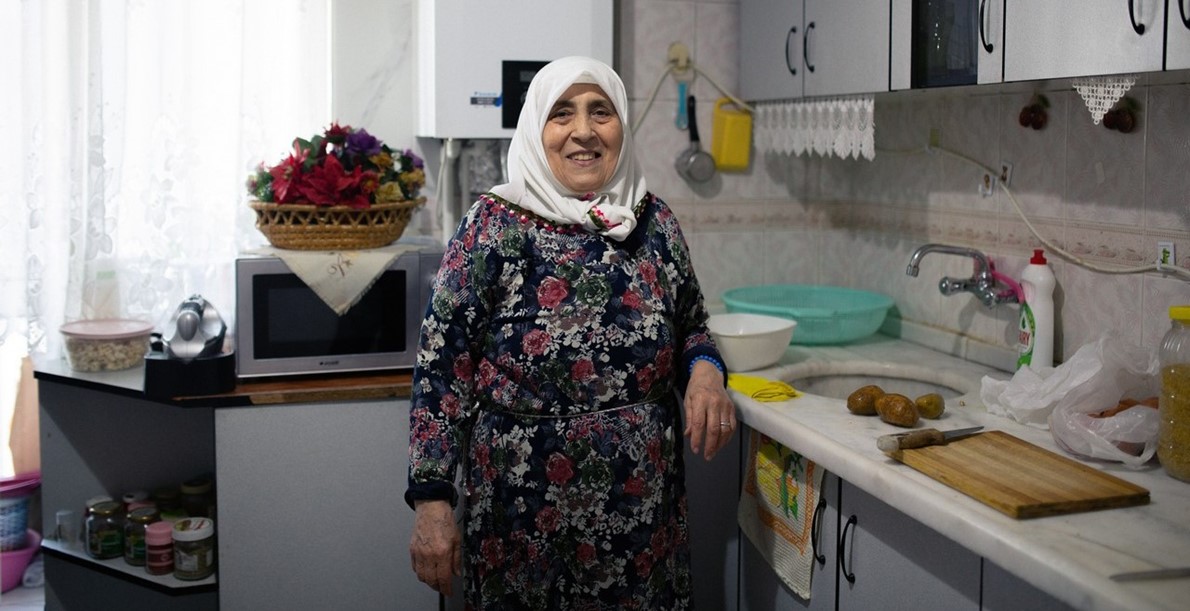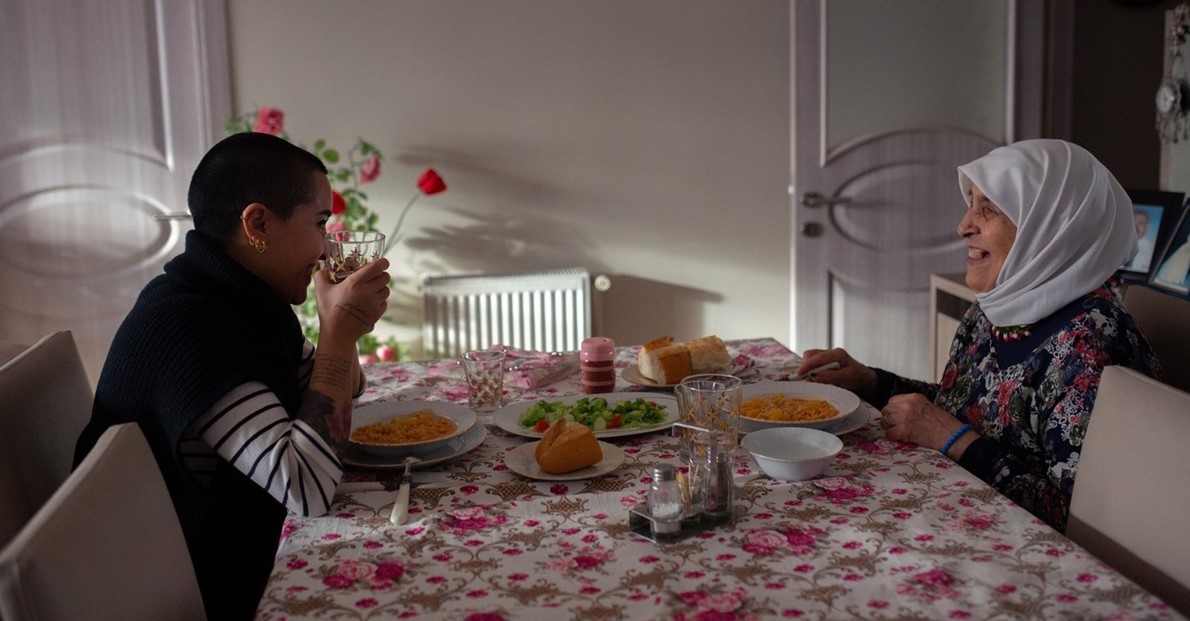Ionly intended to watch one of the snack-size shorts from the
new season of “Grandmas Project”, a web series in which film directors document
their grandmothers as they cook at home. But in a couple of hours, glued to my
laptop, I wolfed down the entire archive.
اضافة اعلان
Made by mostly French directors, and featuring their immigrant
grandmothers, the shorts had the same irresistible flavor as Martin Scorsese’s
1974 documentary “Italian-american”. In its opening scenes, Catherine Scorsese,
the director’s mother, sits on a shiny, plastic-wrapped couch and considers the
silliness of her son’s film: “What should I say? You want me to tell you how I
make the sauce?”
I have watched it countless times, always noticing some new,
magnificent idiosyncrasy in Catherine Scorsese’s tone, her gestures, her humor,
the precise clutter of her countertops and shelves. I thought of her again when
I watched the charming short by Zeynep Dilara.
In reality, grandfluencers command large, multigenerational audiences on TikTok, Instagram, and YouTube. The internet has a boundless, almost compulsive appetite for watching wholesome old women go about the business of their everyday lives.
Dilara’s grandmother Munise Bostanci sings a beautiful, mournful
song in Turkish while she simmers bulgur wheat with potato and onion for their
lunch. She is a little embarrassed by her singing, but says she does not care.
“Who’s going to watch anyway? My children and grandchildren?”
GrandfluencersHow typical of a grandma to underestimate her popularity and her
reach! To treat a professional film shoot like a kid’s class project. In
reality, grandfluencers command large, multigenerational audiences on TikTok,
Instagram, and YouTube. The internet has a boundless, almost compulsive
appetite for watching wholesome old women go about the business of their
everyday lives.
I am thinking of “Pasta Grannies,” Vicky Bennison’s gentle
YouTube series documenting the techniques of Italian grandmothers, which later
became a cookbook. As well as larger amateur accounts like the family-run Veg
Village Food, which features a 73-year-old Punjabi woman named Amar Kaur and
typifies the genre.
More than 5 million followers tune in to watch Kaur cook bamboo
biryani, golgappa with homemade puffs of pastry, eggplant pakoras, pizza,
milkshakes, Oreo cakes, and all kinds of twists on packaged noodles.
 An undated photo of Munise Bostanci in her kitchen.
Bostanci stars in an episode of “Grandmas Project,” a web series in which film
directors document their grandmothers as they cook.
An undated photo of Munise Bostanci in her kitchen.
Bostanci stars in an episode of “Grandmas Project,” a web series in which film
directors document their grandmothers as they cook.
Kaur has a simple setup in her family’s courtyard — a
wood-burning stove and outdoor tap for washing vegetables — but she cooks meals
for about 100 children in her village, sometimes more. She works steadily and
hardly speaks, except to identify the names of ingredients as she tosses them
into gigantic pots and bowls.
Hardeep Sharma, one of her grandsons, shoots the videos and runs
the account, and various cousins and uncles often help Kaur with the prep. In
November, riding the popularity of the account, the family opened Veg Village
Food, a restaurant in Mohali, in northern India, though Sharma told me his
grandmother doesn’t work there — she still prefers cooking at home, as a public
service, always giving away the food she makes. Fans adore and admire Kaur, and
Sharma often translates the nicest comments for her.
Watching a grandmother cook can be educational, ambient, or
entertaining. It can be deeply nostalgic and emotional, too. It is not a
coincidence that, as Hannah Giorgis reported in The Atlantic, traffic for
grandfluencer food accounts on TikTok tends to spike around the holidays, when
younger users may be aching for familial connections they lost, or never had.
Not just the cookingBut the exhilaration of “Grandmas Project” is not in the
cooking. The most interesting moments come when the grandmothers themselves
offer commentary about the process of being turned into images of grandmothers
— and their discomfort with it.
 An undated photo of the director Zeynep Dilara, left,
and her grandmother Munise Bostanci sitting down to eat simmered bulgur wheat
with potato and onion.
An undated photo of the director Zeynep Dilara, left,
and her grandmother Munise Bostanci sitting down to eat simmered bulgur wheat
with potato and onion.
Lola Bessis’ Italian grandmother, who goes simply by “nonna”,
was so uneasy about projecting an image of cozy, aging domesticity that, at
first, her granddaughter explains, she resisted the project entirely. That
resistance is understandable: Grandma content tends to flatten women out into
an archetype: an industrious, uncomplaining source of hard-won knowledge, or a
cute, benign, twinkly-eyed craftswoman.
Many of the women in “Grandmas Project” are also sad, tired,
angry, and sometimes a little incoherent. They are potty-mouthed and funny and
inconsistent. They are lonely, or nostalgic, or eager to fix a date with their
crushes who live downstairs. They are even, sometimes, sick of being filmed.
But the exhilaration of “Grandmas Project” is not in the cooking. The most interesting moments come when the grandmothers themselves offer commentary about the process of being turned into images of grandmothers — and their discomfort with it.
Munise Bostanci, who sings while she cooks, has had just about
enough by the end of the shoot. She makes fun of her granddaughter for getting
excited about the light streaming into the apartment, casting a dramatic shadow
of cut roses on the wall. She cracks her granddaughter up with her complaints.
When Zaga Sondermajer-Stankovic bakes an elaborate Moskva torta
for her granddaughter Mila Turajlic, she insists that Turajlic take a good look
at the amount of pineapple spread on the first layer. The camera dutifully
zooms in. But as far as Sondermajer-Stankovic is concerned, she is not doing
this for an audience. “It’s not the camera that needs to look,” she insists,
clearly annoyed. “It’s you!”
Justina Teres shares her recurring dream of being the kind of
woman who lives on a prairie and carries a rifle. The portraits are brief, but
intimate, and it is easy to forget that these women are speaking to their
grandchildren — not to us.
Read more Reviews
Jordan News



